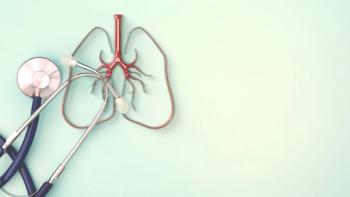Patients who were minimal residual disease (MRD)-negative with newly diagnosed acute myeloid leukemia (AML) and high-risk myelodysplastic syndrome (MDS) experienced improved complete response (CR)/CR with incomplete count recovery (CRi) rates when treated with Mavenclad (cladribine) plus Venclexta (venetoclax), study results demonstrated.
Findings from a phase 2 trial were presented at the 2024 American Society of Hematology Annual Meeting and Exposition (ASH).
In the overall population, the overall response rate (ORR) was 96%, including 95% for those with AML and 100% for those with MDS. For those with AML, the CR rate was 82%, and the CRi rate was 12%. Of note, 89% of patients were MRD-negative. For patients with MDS, the CR rate was 29%.
“[Mavenclad] plus [Venclexta] is a highly effective curative regimen, producing deep and durable remissions in newly diagnosed MDS and AML,” Dr. Tapan M. Kadia, professor in the Department of Leukemia, Division of Cancer Medicine at The University of Texas MD Anderson Cancer Center in Houston, said during the presentation.
Glossary:
Minimal residual disease: a very small number of cancer cells in the body during or after treatment.
Complete response: the disappearance of all signs of cancer from treatment.
Overall response rate: the percentage of patients with a positive response to treatment, including a complete or partial response.
Overall survival: the time from diagnosis or treatment that a patient with cancer is still alive.
Event-free survival: the time after treatment ends that a patient remains free from complications or events that the treatment was meant to delay or prevent.
ECOG performance status of 2 or less: a scoring system that indicates how active a person is. With a score of 2 or less, a patient is either ambulatory and capable of self-care but unable to carry out work activities, up to fully active.
Marrow blasts: immature blood cells that are precursors to mature blood cells like red blood cells. In some conditions, these blasts may not mature properly and accumulate in the bloodstream and bone marrow.
Neutropenia: lower than normal number of neutrophils, a type of white blood cell.
Thrombocytopenia: lower than normal number of platelets in the blood.
Bacteremia: presence of bacteria in the bloodstream.
Colitis: inflammation of the colon.
The trial assessed Venclexta plus Mavenclad, idarubicin, and cytarabine. The primary end point was the CR rate for the aforementioned patient population. The secondary end points included ORR, overall survival (OS), event-free survival (EFS), response duration and safety.
Patients were included in the study if they had newly diagnosed, treatment-naïve AML or high-risk MDS with 10% or more blasts or a risk score of 2 or more; were 65 years old or younger; had an ECOG performance status of 2 or less; and had adequate organ function.
The median patient age was 49 years old, 40% of patients in the AML group had adverse European Leukemia Network (ELN) 2022 risk and 13% had AML with myelodysplasia-related changes. In the MDS group, the median number of marrow blasts was 11, and the median IPSS-revised score was 6.5.
Molecular characteristics in the AML group included NPM1 (34%), DNMT3A (32%), TET2 (21%), NRAS (19%) and IDH2 mutations (12%).
Of note, in the AML subgroup, the ORR was 100% for those with favorable-risk, 96% for intermediate-risk and 92% for adverse-risk disease. Based on molecular diagnostics, the ORR was 100% for patients with NPM1 mutations, 100% for KMT2A rearrangements, 33% for TP53-mutated disease and 50% for complex karyotype.
At a median follow-up of 2.9 years, the probability of relapse-free survival in 83 patients with AML was 76% at 2 years and 74% at 5 years. The 2-year EFS rate for patients with AML was 72% and 68% for 5 years. For the 7 patients with MDS, the 2-year OS rate was 100%, and the 5-year OS rate was 100%.
A total of 61 patients received a stem-cell transplant, and the 2-year OS rate for this group was 84%, and the 5-year OS rate was 82%. In the 15 patients who did not receive a transplant, the 1-year OS rate was 63%, and the 5-year OS rate was 63%. Regarding the ELN 2022 scores, 2-year OS rates were 90% for patients with favorable risk, 74% for intermediate risk and 67% for adverse risk.
For patients who had KMT2A-rearranged AML, the 2-year OS rate was 73%, and the 5-year OS rate was 73%. Those with NPM1 mutations had a 2-year OS rate of 78% and a 5-year OS rate of 78%. Those with TP53 mutations or complex cytogenetics had a 2-year OS rate of 43% and a 5-year OS rate of 43%.
The most common hematologic side effects were anemia (100%), neutropenia (100%) and thrombocytopenia (100%). Non-hematologic side effects included neutropenic fever (84%), infection (60%), bacteremia (36%), pneumonia (21%), colitis (13%) and skin or soft tissue infection (10%).
Within 30 days of treatment, one patient died, and within 60, two patients had died. The disease status at death included MRD-negative response (52%), MRD-positive response (10%), residual AML (33%) and unknown (5%).
For more news on cancer updates, research and education, don’t forget to subscribe to CURE®’s newsletters here.





